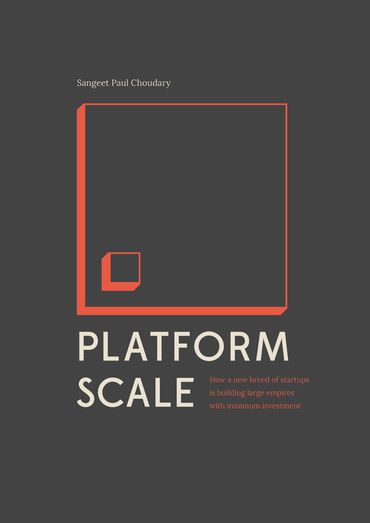La peça clau de l'engranatge
This is the original version of my abridged op-ed in
El Punt Avui published last Sunday. (in catalan, you may use Google translator)
Tots aquells que han intentat definir les característiques determinants d’un sistema de salut eficient acaben observant que la coordinació assistencial esdevé una peça cabdal. Això vol dir que la presa de decisions clíniques és més acurada quan diferents professionals i organitzacions treballen en la mateixa direcció, la de millorar la salut i qualitat de vida de les persones. Dit així sembla força elemental, però la realitat és més complexa. Davant d’un procés d’atenció calen moltes aportacions diferents, des de molts àmbits diferents, amb un nivell de qualitat determinat. L’engranatge ha de funcionar sense grinyolar ni una mica.
Hayek fa 70 anys explicava en un article clàssic
-“The use of knowledge in society”- com el mecanisme de preus és un instrument extraordinari per coordinar les decisions econòmiques, i com una peça d’informació tant limitada era capaç d’orientar les accions dels que produeixen i dels que consumeixen. En realitat, sabem que és va quedar curt i per tant sense desmerèixer el potencial del mecanisme hi ha prou evidència de les seves mancances si el prenem de forma aïllada.
El sector salut és un exemple de com la formació dels preus és controvertida per la pròpia naturalesa
de l’activitat.
L’oferta i la demanda de serveis assistencial no es coordinen majoritàriament pel mecanisme de preus, són els prescriptors que determinen quins altres professionals i organitzacions han de prendre part en la cadena de valor. És el criteri professional el que guia les decisions en el marc d’unes organitzacions sanitàries que tenen les seves regles de funcionament. I aquesta peça clau de l’engranatge és la fonamental: la de l’organització sanitària integrada que és capaç de definir rutes assistencials davant problemes de salut. Es tracta de definir qui fa què, quan i com. I això esdevé encara més rellevant en el cas de les malalties cròniques, motiu pel qual el Pla de Salut a Catalunya hi ha situat tot l’èmfasi de forma molt encertada.
Substituïm doncs els preus pel professionalisme en la coordinació i assignació de recursos, però no n’hi ha prou. Tota organització té un disseny d’incentius, d’allò que motiva l’acció per part dels seus membres, el professionalisme n’és una part però n’hi ha d’altres. La cultura organitzativa i els valors que la sustenten són determinants del comportament dels diferents actors. El valor que s’atorga al mèrit professional, a l’esforç, i a la qualitat esdevé singular de cada organització. Quan una organització és incapaç de enaltir l’excel·lència i reconèixer-la, aleshores hi ha dues possibilitats: aquells que s’han esforçat no es consideren reconeguts i se’n van – encara que algunes vegades ho fan parcialment-, o tots plegats acaben al que se’n diu regressió a la mitjana. En ambdós casos, hi ha una pèrdua potencial per a tothom. Cal dir que no em refereixo a una qüestió estricta del que se’n diu incentius tipus “pal o pastanaga”, de resposta a un estímul concret. Cal triar entre el context de “mediocràcia” o meritocràcia que és el que defineix l’actitud, el contracte implícit.
Per tal d’assolir la integració assistencial de forma exitosa cal garantir uns incentius acurats. L’enfoc professionalista és necessari però no suficient. I aquests incentius inacurats és precisament la història del que s’ha esdevingut a Catalunya des del 2003, quan va començar la prova pilot de compra poblacional en el sistema sanitari públic.
En aquell moment, determinades zones geogràfiques van assajar d’impulsar organitzacions sanitàries integrades a canvi d’una compensació de l’activitat de forma capitativa. Es trencava doncs des d’aquell moment el criteri de volum, quan més fas més gran és la compensació. S’entrava en una nova dinàmica on el conjunt de serveis de salut poblacionals de proximitat es compensaven pel nombre d’habitants. La innovació era extraordinària i de nivell, anava en la direcció correcta. En alguns casos va mostrar uns resultats excepcionalment bons. Però com sempre, una bona idea aplicada a mitges o sense calibratge fi en el temps, es dilueix. Lluny de reconèixer les mancances en l’aplicació, fins i tot sortien aquells que assenyalaven el desencert del pagament capitatiu.
Ens cal un exercici d’humilitat i aprendre de les realitats recents. El sistema sanitari català té un elevat potencial per desenvolupar l’atenció integrada però té males peces al teler. La primera de totes és el disseny institucional. L’obsessió per la controvèrsia “públic-privat” ens ha fet perdre el guió de la pregunta clau, quins són els valors i quins resultats volem. Si el principi que pretenem preservar és que no hi hagi distribució dels beneficis quan el finançament és públic, aleshores el problema està acotat i no cal donar-hi més voltes. Afecta molt marginalment al conjunt. La segona peça és la següent: si l’objectiu que pretenem és assolir el millor nivell de salut amb els recursos disponibles, aleshores ens hem de preguntar quins són els resultats relatius de les diferents organitzacions i professionals, i admetre que cal compensar
diferencialment l’esforç per l’excel·lència i la qualitat. Si a tots els professionals i organitzacions se’ls assigna un criteri homogeni de compensació sense ajustar pel valor, aleshores cal alertar la ciutadania que no val queixar-se, tindrem el sistema de salut que no motivarà prou l’assoliment d’objectius. L’equitat s’haurà aigualit en l’igualitarisme. Al final, els incentius sempre treballen en la seva pròpia direcció. Quan algú interpreta uns resultats d’un sistema com erronis, insuficients o millorables, cal que pensi també que són la conseqüència dels incentius. És a dir, que els incentius dissenyats han conduït a un resultat perfectament equivocat.
Ara tenim davant nostre el repte de la integració social i sanitària al costat de la transformació digital del sistema de salut. No es tracta tant sols de la integració assistencial, ara més que mai cal incentivar l’excel·lència i la qualitat en un entorn d’estancament pressupostari profund. El sistema de pagament dels serveis assistencials que s’ha aplicat d’ençà del decret de 2014 i la compensació dels professionals requereix una revisió en profunditat que no es resoldrà amb tímids ajustos segons entorn socioeconòmic. L’entorn està canviant massa ràpid i la regulació ha de refer-se des dels seus fonaments. Altrament tothom resta avisat, tindrem el resultat d’acord amb
els incentius que hem dissenyat. Som a temps d’escollir entre apostar per la “mediocràcia”, un sistema de qualitat mitjana, o d'excel.lència si incorporem la meritocràcia a les organitzacions sanitàries. Tindrem un resultat justet, o un resultat excel·lent, tot depèn de l’opció escollida.
A selection of:
LI BAI, DU FU, ONO NO KOMACHI, BEATRIU DE DIA, DANTE ALIGHIERI, FRANCESCO PETRARCA, GEOFFREY CHAUCER, AUSIÀS MARCH, PIERRE DE RONSARD, CHRISTOPHER MARLOWE, WILLIAM SHAKESPEARE, JOHN DONNE, FRANCISCO DE QUEVEDO, ANNE BRADSTREET, WILLIAM BLAKE, LORD BYRON, JOHN KEATS, HEINRICH HEINE, ALEKSANDR PUIXKIN, ELIZABETH BARRETT BROWNING, EDGAR ALLAN POE, CHRISTINA GEORGINA ROSSETTI, ALGERNON CHARLES SWINBURNE, THOMAS HARDY, PAUL VERLAINE, ÀNGEL GUIMERÀ, ROBERT LOUIS STEVENSON, W.B. YEATS, PAUL LAURENCE DUNBAR, RAINER MARIA RILKE, EDWARD THOMAS, LOUISE BOGAN, SARA TEASDALE, D.H. LAWRENCE, EDNA ST. VINCENT MILLAY, CARLES RIBA, JOAN SALVAT-PAPASSEIT, VICENTE ALEIXANDRE, JOHN BETJEMAN, W.H. AUDEN, MÀRIUS TORRES, JOSEP PALAU I FABRE, GABRIEL FERRATER, VICENT ANDRÉS ESTELLÉS, JOAN VERGÉS, FELIU FORMOSA, JOSEPH BRODSKY, PERE ROVIRA, MARIA-MERCÈ MARÇAL i JOSEP PEDRALS



